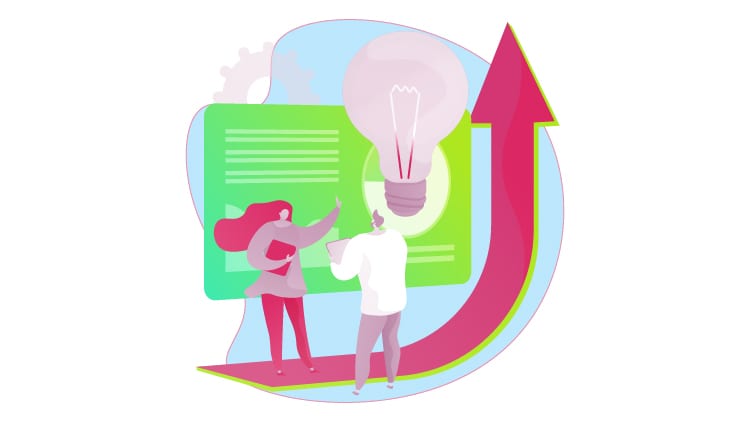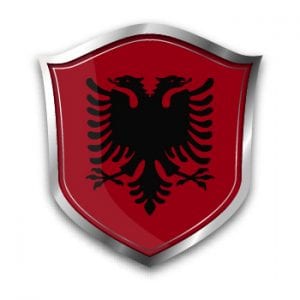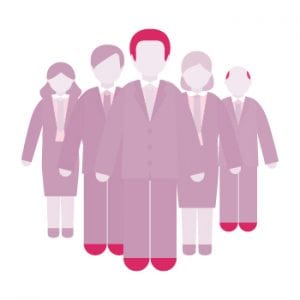
Facts About The Albanian Language Tree
When it comes to the Albanian language tree, it is one of the most unique foreign languages.
Like a rare winter flower, Albanian is the only existing representative on its branch of the Indo-European family tree. What connection does it have to the Albanian language? And how exactly does this literary language not have any link to other languages? Well, according to the records found in the 15th Century, it is the last Indo-European branch.


What Makes Albanian a Distinct Language?
While its ancestors remain a mystery, it even has no next of kin. Years on end, various alphabets including Latin Script, Greek letters, and Arabic letters have been utilized in Albanian. But now it possesses its own set of Alphabets. The majority of the European and Western Asian languages are a part of the Indo-European language family tree. But, as opposed to many Indo-European languages, Albanian is not directly in connection to other languages. Like Greek and Armenian, it has its own distinctive branch.
It also implies that it’s not like Romance languages or Slavic languages or even Germanic languages. In these cases, one language can be learned and you’ll capable of understanding another or at the minimum have it effortless to master some other language. Albanian requires to be comprehended independently. Sure if you possess expertise in Latin/Romance languages or Greek or Turkish you may be able to grab some loan words effortlessly but it’s yet not very helpful. Particularly with regard to grammar and tenses and how words alternate with respect to distinct phrases.
What is the Indo-European Language Tree Family?
Indo-European languages are currently spoken widely in the Americas, Europe, and also Western and Southern Asia. Just like languages for instance Spanish, French, Portuguese, and Italian are all brought down from Latin, Indo-European languages are assumed to be acquired from a hypothetical language known as Proto-Indo-European, which is no longer spoken.
It is majorly possible that the earliest speakers of this language originally lived around Ukraine and neighboring regions in the Caucasus and Southern Russia, then spread to most of the rest of Europe and later down into India. The earliest possible end of Proto-Indo-European linguistic unity is believed to be around 3400 BCE.
Albanian Language Geographic Spread
Europe
This language is spoken by approximately 6 million people within the Balkans, primarily in Albania, Kosovo, North Macedonia, Serbia, Montenegro, and Greece. However, thanks to old communities in Italy and therefore the large Albanian diaspora, the worldwide total of speakers is far above in Southern Europe and numbers approximately 7.5 million.
There were tries to link Albanian with some of the inadequate attested ancient languages of the Balkans, specifically Illyrian but also Dacian and Thracian.
The Albanian lingo is the official language of Albania and Kosovo, and the co-official language in North Macedonia. Albanian is recognized as a minority language in Croatia, Italy, Montenegro, Romania, and Serbia. Albanian is additionally spoken by a minority in Greece, specifically within the Thesprotia and Preveza regional units. It is also used in few villages in Ioannina and Florina regional units in Greece. It’s also spoken by 450,000 Albanian immigrants in Greece.
Albanian is the third most spoken language in Italy. This is often thanks to considerable Albanian immigration to Italy. Italy features a historical Albanian minority of about 500,000, scattered across southern Italy, referred to as Arbëreshë. Approximately 1 million Albanians from Kosovo are dispersed throughout Germany, Switzerland, and Austria. These are mainly refugees from Kosovo who migrated during the Kosovo War. In Switzerland, the Albanian language has the sixth most speech with 176,293 native speakers.
Albanian became a political language in North Macedonia on 15 January 2019.
America
There are large numbers of Albanian speakers within the US, Argentina, Chile, Uruguay, and Canada. A number of the primary ethnic Albanians to arrive within the US were Arbëreshë. Arbëreshe has a robust sense of identity and is unique therein they speak an archaic dialect of Tosk Albanian called Arbëreshë.
In North America (the United States and Canada) there are approximately 250,000 Albanian speakers. It’s spoken within the eastern area of the US in cities like NY City, New Jersey, Boston, Chicago, Philadelphia, and Detroit, also as in parts of the states of Ohio and Connecticut. Greater New Orleans features a large Arbëresh community. Oftentimes, wherever there are Italians, there are a couple of Arbëreshe mixed with them. Arbëreshe Americans, therefore, are often indistinguishable from Italian Americans thanks to being assimilated into the Italian American community.
In Argentina, there are nearly 40,000 Albanian speakers, mostly in Buenos Aires.
Asia
Asia and Oceania Approximately 1.3 million people of Albanian ancestry sleep in Turkey, and quite 500,000 recognize their ancestry, language, and culture. There are other estimates, however, that place the number of individuals in Turkey with Albanian ancestry and or background upward to five million. However, the overwhelming majority of this population is assimilated and does not possess fluency within the Albanian language, though a vibrant Albanian community maintains its distinct identity in Istanbul to the present day.
Africa
In Egypt, there are around 18,000 Albanians, mostly Tosk speakers. Many are descendants of the Janissary of Muhammad Ali Pasha, an Albanian who became Wāli, and self-declared Khedive of Egypt and Sudan. Additionally, to the dynasty that he established, an outsized part of the previous Egyptian and Sudanese aristocracy was of Albanian origin. Additionally, to the recent emigrants, there are older diasporic communities around the world.
Australia
Albanian is additionally spoken by Albanian diaspora communities residing in Australia and New Zealand.


Facts about the Albanian language tree
The Albanian diaspora is large
The number of Albanians outside of their native country – is far above the number of individuals living inside Albania. While Albania features a population of a touch under 3 million people, it’s estimated that there are around 7 million speakers of this lingo scattered across the earth.
It’s an isolated language
This specific speech takes up a branch all on its own on the Indo-European tree, meaning that it’s no close relatives around. Before being identified as belonging to a solitary branch within the Indo-European tree, it had been also considered Germanic and Balto-Slavic. However, Albanian has influenced many Balkan languages.
It Has a Confusing History
Even today, it isn’t entirely clear how and from what Albanian evolved. it’s no surviving relatives and even its ancestors are obscure. it’s often thought to be descended from Illyrian but there’s not enough evidence to conclusively confirm that. The very fact that only a few samples of Illyrian languages have survived to the present day doesn’t help.
Two main Albanian dialects
Both dialects have even been written in the Ottoman Turkish version of the Arabic script Cyrillic Alphabets, and a few local alphabets (Elbasan Vithkuqi Todhri, Veso Bey, Jan Vellara, and others, see original Albanian alphabets). Various Albanian dialects exist, they’re divided into two primary parts: Tosk and Gheg. they’re furthermore divided along a south-north divide, with Tosk being spoken in southern Albania and its neighbors, and Gheg within the northern parts. The approximate border between the 2 dialects is that the Shkumbin river. On the banks of the river, there also are several dialects spoken which act as a bridge between the two groups, making classifying them somewhat difficult.
The varied official versions
Before the communist regime took over in Albania, Tosk wasn’t considered the official language. There were two dialects, the northern dialects, and Tosk. Instead, within the early 20th century, the Albanian Literary Commission recommended the utilization of the Elbasan dialect. A dialect that had the characteristics of both of the main groups because of the official version. However, after WWII, the communist regime chose Tosk because of the new standard.
One language, several alphabets
Over the years, the language has made use of several different alphabets. At one point, an Arabic alphabet (the Ottoman Turkish version) was used, at another, Cyrillic. Additionally, several local alphabets, like Todhri, Elbasan, and Veso Bey, had been developed. There have also been periods when the Tosk dialects used the Greek alphabet and therefore the Gheg one’s Latin Alphabet script.
Now, it’s an alphabet
Today, standardized Albanian uses its own alphabet. It’s essentially a Roman alphabet with some Albanian additions. for instance, the letters ë, ç, and nine pairs of letters form separate characters of the alphabet – dh, gj, ll, nj, rr, sh, th, xh, zh.
It’s a somewhat complicated grammar
grammar has five cases – nominative, genitive, dative, accusative, and ablative – and gendered nouns. Although the nouns are mostly of the masculine or feminine gender, rare neuter nouns exist which may act masculine in singular and female in the plural. Its verb system also has three persons, two numbers, ten tenses, two voices, and 6 moods.
Admiration is vital
Another interesting fact about the grammar of this lingo is that one of its six moods is reserved for admiration. These are verb forms that are used solely for surprise or astonishment. the utilization of this mood more-or-less coincides with English use of “apparently” but it also can be used ironically.
Overview of Albanian Grammar
Albanian nouns are categorized into three genders (masculine, feminine, neuter) and two numbers (singular, plural), with four declensions. Definite articles are attached to nouns, e.g., zog (bird) becomes zogu (the bird). Adjectives follow and agree with the noun in gender, number, and case, such as një burrë i madh (a big man).
The Albanian verb system is complex, with multiple moods (indicative, subjunctive, admirative, conditional, optative, imperative) and tenses within each mood. Verbs agree with their subjects in person (1st, 2nd, 3rd) and number. Albanian verbs can also include reflexive forms, e.g., laj (I wash) and lahem (I am washed).
Vocabulary has been enriched through Latin, Slavic, and Turkish loanwords, reflecting historical influences and close contact with neighboring cultures.

Historical Influences on Albanian Language Development
The development of the Albanian language is marked by significant historical dates and influences. From the 5th and 1st centuries to the 17th century, Albanian records reveal interactions with Romanian languages and the integration of loanwords. Key references by scholars like Chang, Hyllested, and Joseph highlight the evolution of Tosk Alb and Balkan Tosk dialects, distinguishing Gheg Tosk and Doric Greek influences. Latin and Greek loanwords have left a lasting impact on the language, with Latin letters becoming integral to its orthography.
Modern and Ancient Greek also played roles in shaping Albanian, as noted by Brian D. and published works through Walter de Gruyter. The Albanian government’s efforts in the 21st century have further standardized the language, balancing historical roots and modern needs. These elements collectively illustrate the complex journey of Albanian as a modern language.
The Evolution of the Albanian Language
The Albanian language, deeply rooted in the Paleo-Balkan languages, showcases a fascinating evolution influenced by Ancient Greek and other regional tongues. Linguists like Franz Bopp have studied phonological differences between Ancient and Modern Greek, identifying Greek loanwords in Albanian. The earliest records of Albanian, documented by scholars like Robert Elsie and Frang Bardhi, reveal significant historical linguistics insights. In Western Macedonia, where the Albanian language thrived, Albanian orthography adapted through Albanian schools and literary works. The Albanian government has played a crucial role in standardizing Albania, bridging its rich history with contemporary usage.
Walter de Gruyter’s publications on Romanian and Albanian languages further highlight the vast majority of these linguistic transformations. These works underscore the continuous influence of Greek loanwords and phonological evolution, ultimately shaping Standard Albanian.
Albanian Language Orthography
Albanian language orthography has been shaped by significant historical records and dates, such as those found in the Dottrina cristiana. Prominent Albanian intellectuals, including Hyllested and Joseph, have extensively analyzed the language. The distinct dialects of Tosk Albanian and Gheg Tosk, along with the Macedonian dialect, illustrate the linguistic diversity within the Albanian language. Brian Joseph, a noted scholar with publications through John Benjamins Publishing Company, has contributed to the field of Comparative and Historical Indo-European Linguistics, highlighting connections to Doric Greek.
Key references by Orel, Hyllested, and Huld provide critical insights into the orthographic evolution of Albanian. These works collectively demonstrate the intricate development of the language’s written form, influenced by both historical documentation and intellectual scholarship.
Frequently Asked Questions
What is the geographic distribution of the Albanian language?
Albanian is spoken by about 6 million people in the Balkans, including Albania, Kosovo, North Macedonia, Serbia, Montenegro, and Greece. It is also spoken by a significant diaspora, with around 7.5 million speakers globally.
What are the two main dialects of Albanian?
The two main dialects are Tosk and Gheg. Tosk is spoken in southern Albania and neighboring areas, while Gheg is found in the north.
How did the Albanian language evolve?
Albanian is an isolated language with uncertain origins. It is often thought to descend from Illyrian, but evidence is sparse. The language has been influenced by Latin, Slavic languages, Turkish, and Greek.
What alphabets has Albanian used historically?
Albanian has used several alphabets over time, including Arabic script, Cyrillic, Greek, Latin, and various local scripts. Today, it uses a modified Roman alphabet.
How complex is Albanian grammar?
Albanian grammar is complex, with five cases (nominative, genitive, dative, accusative, ablative), gendered nouns, and a verb system that includes three persons, two numbers, ten tenses, two voices, and six moods.

